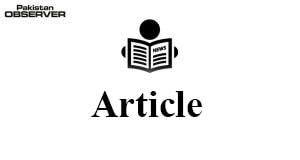What is relationship between poverty & inequality?
THE Pakistan National Human Development Report 2020 on Inequality explores the relationship between poverty and inequality in Pakistan, deconstructing the way both these phenomena hinder human development in the country.
Every day some 16,000 children are born in Pakistan, some in Qilla Abdullah where more than 96 percent of the population is multi-dimensionally poor and others in Lahore, where the multidimensional poverty is below 4.3 percent.
A girl child born in Qilla Abdullah has vastly different prospects compared to one born in Lahore – she has a lower life expectancy at birth, she is far more likely to die in childbirth and far less likely to be economically empowered or financially included.
Her life will be coloured by the lack of opportunities and resources, limited outreach of public services and immeasurable differences in opportunities.
The poor are not a homogenous group, but they are for the most part vulnerable and marginalised – negatively impacted by structural inequalities, such as the existing land distribution system, access to basic services such as healthcare and education, and caste and class differentials.
Factors like population density, governance and public service delivery, industrial agglomeration, natural resource endowment, national and international migration, gender relations, and natural disasters impact the extent of poverty in a region.
Capitalism fosters inequity and unless well-regulated allows for extreme poverty. It is a system that has clearly failed. Consider that the world’s richest 1 percent “have more than twice as much wealth as 6.9 billion people”, notes Oxfam (2020).
Social protection and graduation programmes are geared towards curbing the excesses of the current system and moving towards more egalitarian societies, but the intensity of poverty continues to grow.
In Pakistan, while the incidence of poverty has gone down, its intensity – the degree of deprivation and lack of access – has increased.
Global evidence from developed and developing nations points to one key factor when it comes to societies prospering: the presence of inclusive political institutions within a country.
Pakistan has not yet been able to break away from its unequal and extractive socio-political system, which serves a small elite.
Coupled with high land inequality – Pakistan’s land ownership in terms of the Gini-coefficient stagnated at 0.63 between 1995-2005 – we see high levels of deprivation, poverty and rising inequality.
Unable to afford necessities in both the quality and quantity they need to sustain an acceptable standard of living, the poor are unable to prevent the inter-generational transmission of poverty.
Overtime, fewer resources, opportunities and facilities are allocated to poor regions and poor populations, and there is less development, less engagement with the private sector, and ever-decreasing opportunities.
The reverse is true for well-off regions and wealthy populations. Thus, overtime, poverty makes inequality worse.
The Government of Pakistan, provincial governments and the development community have offered social safety programmes, provided various health and education solutions and developed an approach which combines cash transfers, asset transfers and subsidised access to finance to sustainably graduate households out of poverty.
What is needed is greater consistency of policy implementation, especially to mainstream lagging regions and to address the myriad vulnerabilities of different marginalised groups. This is what will ensure an equitable, egalitarian and prosperous Pakistan for all.
—The writer is the Chief Executive Officer of the Pakistan Poverty Alleviation Fund.










